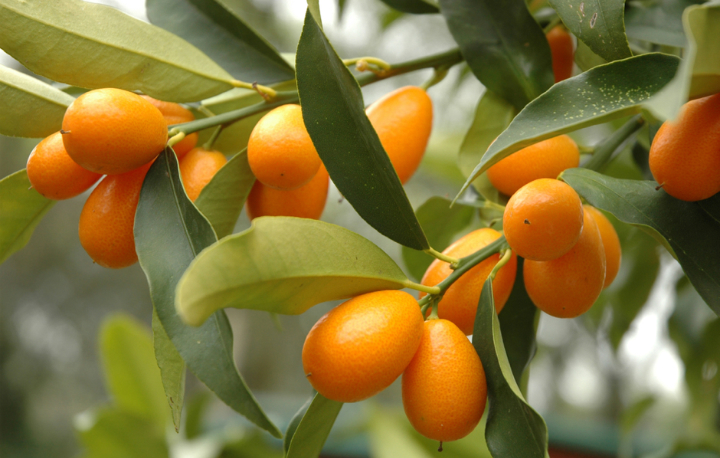KUMQUAT
The kumquat belong to a variety called fonunella. Their name comes from the
Cantonese kam k wat, which means "golden orange."
The fruit is small and elongated, the size and shape resembling large olive.
They have thin orange peel is eaten. It has a diameter of up to 3-5 cm long and
2-4 cm wide. The rind is sweeter than the sour flesh, but if combined have a
pleasant sour taste. Depending on variety, the peel is orange or orange to red.
It is resistant to cold and withstand most of all citrus. In Greece the kumquat
grown mainly in Corfu and the other Ionian islands type daisy (Fortunella
margarita) for fruit which is used in confectionery, made sweets and splendid
liqueurs. Flowering time in mid-summer and propagation and cultivation are the
same as the other citrus fruits.
History of kumquat
The origin of the kumquat is from China where cultivated since the 12th
century, it was not to be cultivated in Europe in the mid 19th century as an
ornamental plant.
The kumquat is aromatic and nutritional properties and is rich in vitamin C and
13 other vitamins. He has linked his name with that of Corfu.
The kumquat low calorific value is Pusan vitamin c and fiber (bark and seeds)
contain folic acid, riboflavin and thiamine. It is rich in flavonoids, with
antihypertensive effect. They contain antioxidants.
The major carotenoids in kumquat, is violaxanthini the cryptoxanthin and
kitrorini.
The fruit should be eaten with the peel. This is the peculiarity that has over
other citrus
